In popular culture, sharks often get a bad rap, painted as ferocious predators lurking in the ocean’s depths. However, many sharks are surprisingly gentle and pose little to no threat to humans. These creatures play crucial roles in maintaining the health of marine ecosystems and are fascinating in their own right. In this listicle, we explore ten shark species that defy the terrifying stereotypes and demonstrate the gentle nature of these misunderstood animals.
1. Nurse Sharks: The Restful Reef Dwellers

Nurse sharks are the epitome of “resting on the job.” Often found lounging on the ocean floor, these sharks are known for their sluggish demeanor and preference for staying close to coral reefs. Despite their intimidating size, reaching up to 14 feet in length, nurse sharks are not aggressive toward humans and generally avoid confrontation. They are bottom-dwellers, feeding mainly on crustaceans and small fish, using their suction-like mouths to vacuum food from the sand.
According to the Florida Museum of Natural History, nurse sharks are often curious and may approach divers out of interest. However, they are not known to pose any threat unless provoked. Their docile nature and distinctive appearance, with small eyes and barbels on their snout, make them favorites among divers and underwater photographers. These peaceful sharks remind us that appearances can be deceiving, often preferring a tranquil nap over hunting.
2. Whale Sharks: Gentle Giants of the Ocean
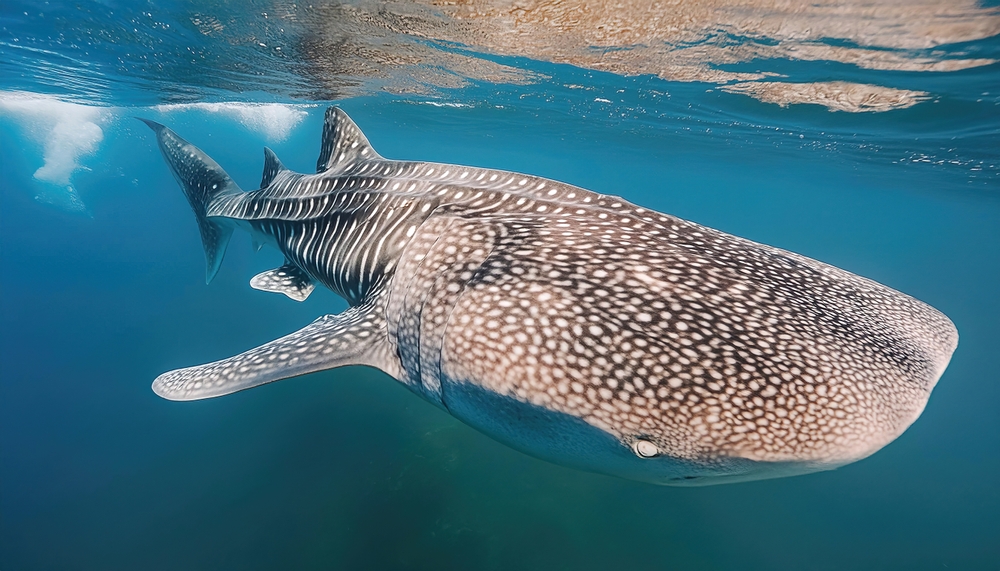
Whale sharks are the largest fish in the ocean, with some individuals reaching lengths of over 40 feet. Despite their colossal size, these gentle giants pose no threat to humans. They are filter feeders, primarily dining on plankton and small fish, which they consume by swimming with their massive mouths open. A swim alongside a whale shark can be a surreal experience, as these creatures glide through the water with grace and ease.
According to National Geographic, whale sharks are naturally curious and have been known to approach boats and divers, often remaining calm and uninterested in any potential threat. Their serene demeanor and awe-inspiring size make them a popular attraction for ecotourists looking to observe these magnificent creatures respectfully. Whale sharks are a testament to the diversity of the shark family, showing that the largest predators can also be the gentlest.
3. Basking Sharks: The Placid Plankton Eaters
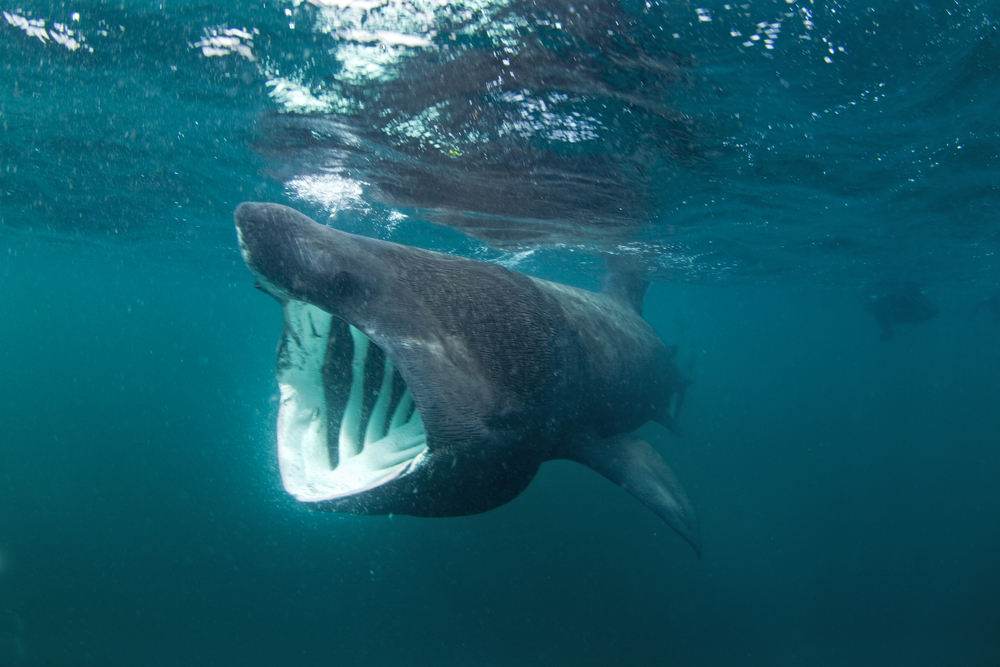
Basking sharks are the second-largest fish in the world and another species that feeds on plankton, similar to whale sharks. These gentle giants can reach lengths of up to 40 feet and are often spotted leisurely swimming with their enormous mouths agape, filtering tiny organisms from the water. Despite their size and somewhat menacing appearance, basking sharks are harmless to humans and are often observed by curious marine enthusiasts. Their slow, deliberate movements resemble a leisurely stroll rather than a chase.
As stated by the Shark Trust, these sharks are migratory and can be seen in temperate waters worldwide, often near the surface, hence the name “basking” shark. They are fascinating creatures that have sparked interest and study due to their unique feeding habits and migrations. Unlike their reputation, they are not interested in large prey and are generally indifferent to human presence. Basking sharks perfectly illustrate how misunderstood these ocean titans can be.
4. Leopard Sharks: The Striped Sea Wanderers
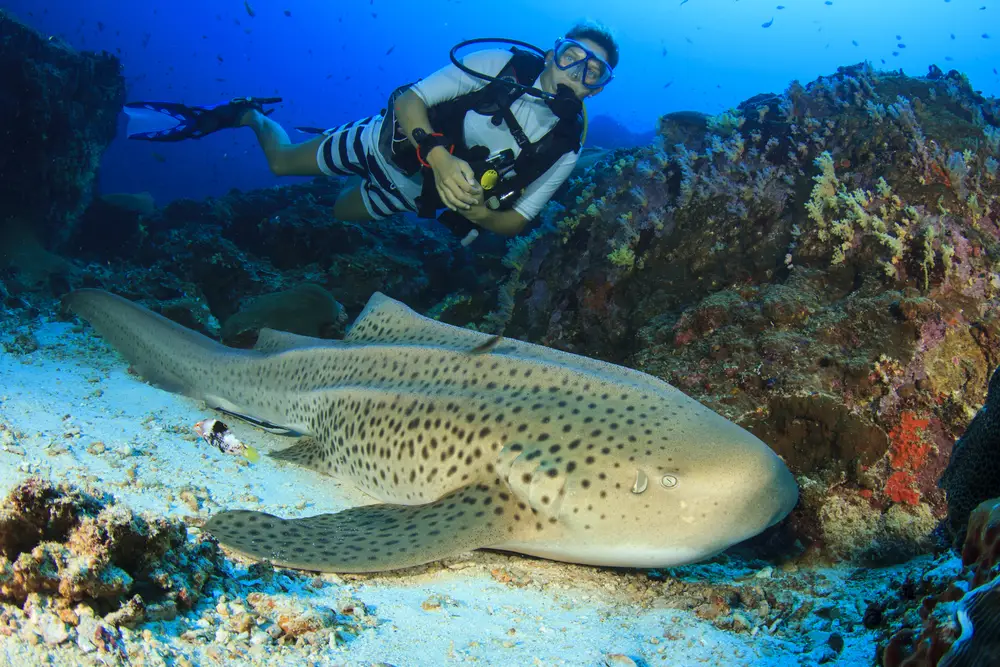
Leopard sharks, named for their distinctive spotted pattern, are a common sight along the Pacific coast of North America. These sharks prefer shallow, sandy areas where they can hunt for crustaceans and small fish. Despite their striking appearance, leopard sharks are gentle and pose no threat to humans. They are often seen in large groups, especially in protected bays and estuaries, creating quite a spectacle for beachgoers and divers alike.
Their social nature and preference for shallow waters make leopard sharks accessible for study and observation, contributing to our understanding of marine life. They are an important species for maintaining the balance of their ecosystems by controlling prey populations and keeping the marine environment healthy. Leopard sharks are a prime example of how different species of sharks contribute to ocean biodiversity without the aggression often associated with them. Observing their graceful movements offers a glimpse into the peaceful side of these misunderstood creatures.
5. Bamboo Sharks: The Bottom-Dwelling Beauties
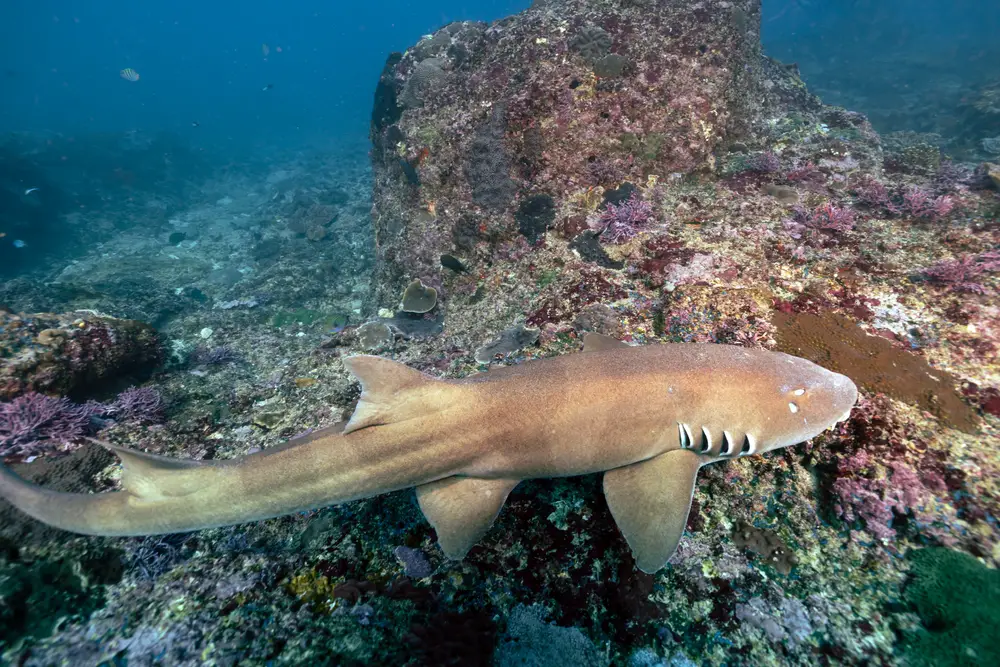
Bamboo sharks are small, bottom-dwelling species commonly found in the Indo-Pacific region. They have slender bodies and often hide among coral reefs, where they spend much of their time searching for small prey like crabs and mollusks. Their small size, typically growing only up to four feet, and their secluded lifestyle make them one of the more approachable shark species. These sharks have a unique mode of locomotion, using their pectoral fins to “walk” along the sea floor.
Their peaceful nature and ease of care have made them popular in both private and public aquariums. Bamboo sharks play a crucial role in coral reef ecosystems by keeping the crustacean populations in check. Due to their non-aggressive nature and intriguing behavior, they serve as a perfect educational tool for raising awareness about shark conservation. These charming little sharks demonstrate that not all sharks fit the fearsome image often portrayed in media.
6. Port Jackson Sharks: The Horned Guardians of the Night
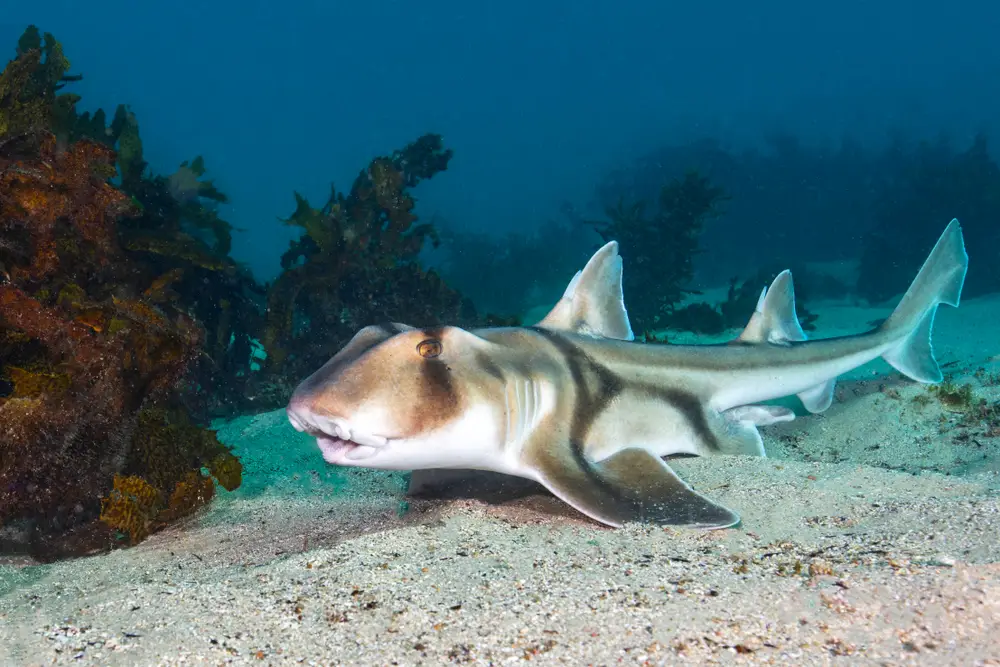
Port Jackson sharks are easily recognizable by the distinctive harness-like pattern on their back and the horn-like projections on their heads. Native to the waters around southern Australia, these sharks are nocturnal and spend their days hiding in rocky crevices. At night, they emerge to feed on sea urchins, mollusks, and other small marine animals. Despite their fearsome look, Port Jackson sharks are quite docile and pose no threat to humans.
Their unique appearance and behavior contribute to their popularity in marine studies and aquariums. Port Jackson sharks are considered important for controlling sea urchin populations, which can otherwise overgraze kelp forests and disrupt marine ecosystems. Their gentle nature and ecological importance highlight their role beyond mere curiosity. By understanding their habits and habitat, we gain a deeper appreciation for the diverse forms of life that inhabit our oceans.
7. Zebra Sharks: The Striped Sleepyheads
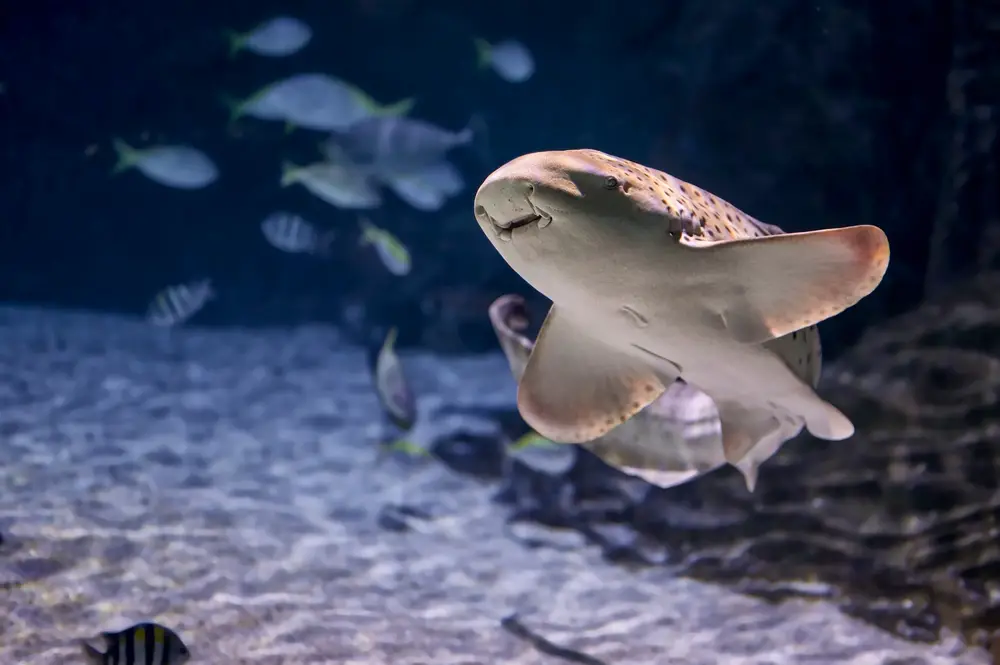
Zebra sharks are another species with a unique pattern, resembling a leopard’s spots as adults, despite their name. Juveniles have black and white stripes, which fade into spots as they mature, leading to some confusion about their identity. These sharks are found in the Indo-Pacific region and prefer sandy bottoms and coral reefs, where they hunt for mollusks and crustaceans. Zebra sharks are known for their docile temperament and are often found resting on the sea floor during the day.
Their calm demeanor makes them a favorite among divers, who often encounter them lounging among corals or gently swimming along the seabed. Zebra sharks play a vital role in maintaining the health of reef ecosystems by preying on species that can otherwise become overpopulated. Their unique life stages and adaptability to different environments make them an interesting study for marine biologists. By appreciating their gentle nature and ecological contributions, we can better advocate for their conservation.
8. Wobbegong Sharks: The Master Camouflagers
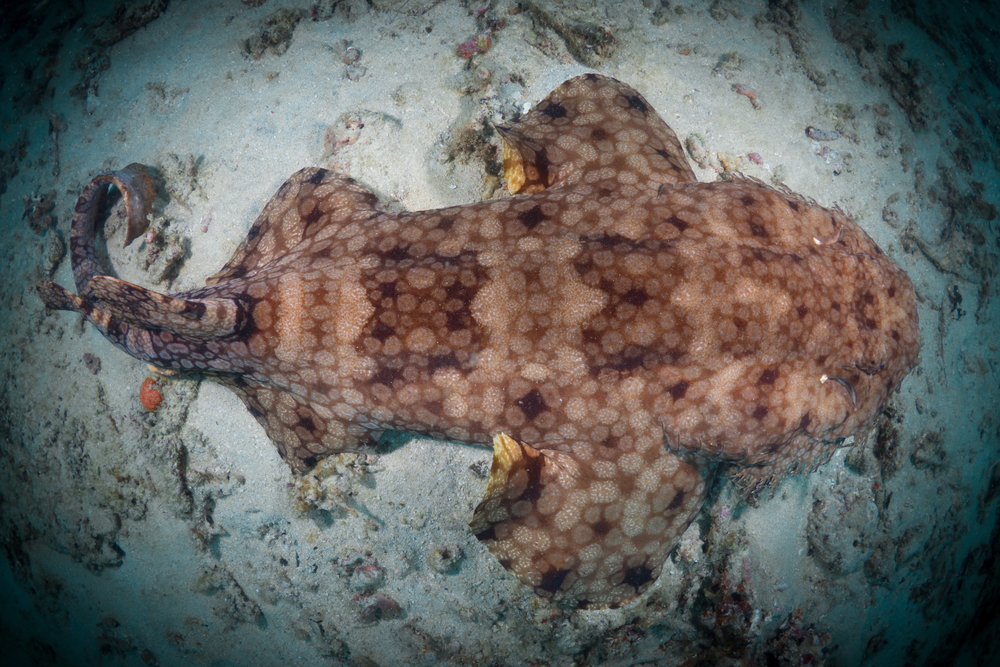
Wobbegong sharks, with their intricate patterns and fringed appearance, are masters of disguise in the ocean. These bottom-dwelling sharks are found in the shallow waters of the Indo-Pacific region, where their unique appearance helps them blend seamlessly into the ocean floor. Wobbegongs are ambush predators, lying in wait for prey to come close, but they have little interest in humans. Their lazy demeanor and excellent camouflage make them fascinating yet often overlooked inhabitants of the ocean.
While wobbegongs can be curious and may approach divers, they are generally not aggressive and prefer to remain hidden. Their role as ambush predators helps maintain the balance of marine ecosystems by controlling populations of fish and invertebrates. Wobbegongs are a perfect example of the diversity within the shark family, showcasing that not all sharks are built for speed and ferocity. Their quiet existence reminds us of the importance of every species in the ocean’s complex web of life.
9. Thresher Sharks: The Tail-Wielding Acrobatics
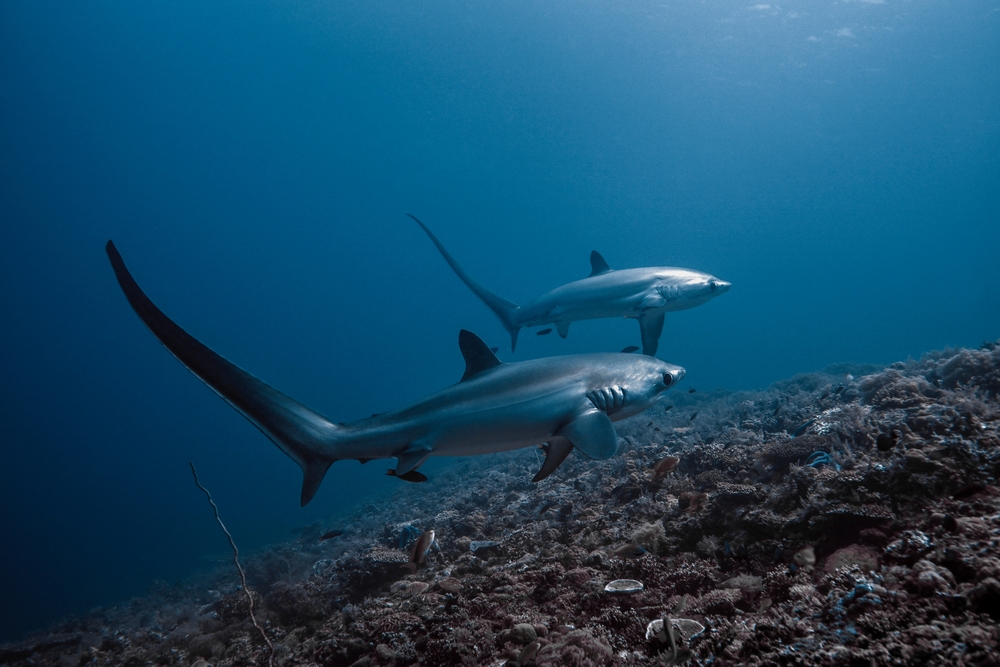
Thresher sharks are known for their long, whip-like tails, which they use in a unique hunting style to stun prey. Found in temperate and tropical oceans worldwide, these sharks are generally shy and elusive, avoiding human interaction. Thresher sharks prefer deep waters, where they use their impressive tails to herd and incapacitate schools of fish. Despite their formidable hunting technique, they are not a threat to humans and are known for their wary nature.
Their majestic, acrobatic displays when hunting are a sight to behold, showcasing their skill and intelligence in the wild. Thresher sharks play a crucial role in controlling fish populations, making them important for the balance of marine ecosystems. Their unique hunting methods and elusive nature have intrigued scientists and divers alike, contributing to our understanding of shark behavior. By appreciating their role and respecting their space, we can help ensure the survival of these remarkable animals.
10. Spotted Dogfish: The Small but Mighty Navigators

Spotted dogfish, also known as spotted catsharks, are small, slender sharks found in the Atlantic Ocean. They are often spotted in shallow waters along coastal regions, where they feed on small invertebrates and fish. These sharks are known for their distinctive spots and gentle nature, making them harmless to humans. Spotted dogfish are resilient creatures, capable of adapting to various marine environments, from rocky reefs to sandy bottoms.
Their small size and non-aggressive behavior make them an important part of the marine food web, controlling populations of smaller marine organisms. Spotted dogfish are also studied for their unique reproductive habits, as they lay egg cases often referred to as “mermaid’s purses.” These sharks remind us of the incredible diversity within the shark family and the different roles they play in ocean ecosystems. By valuing their presence and understanding their contributions, we can promote better conservation efforts for these often-overlooked creatures.
